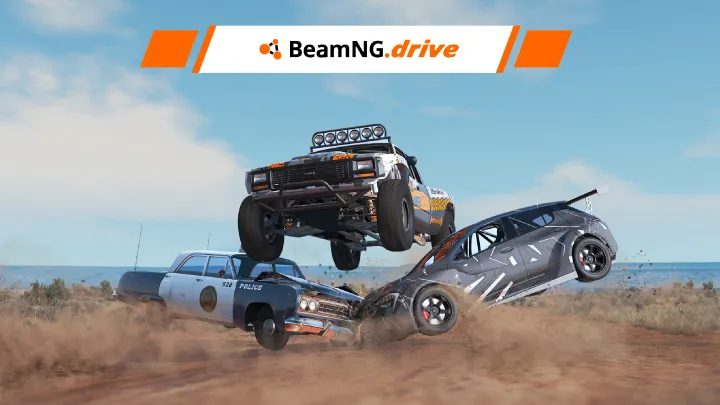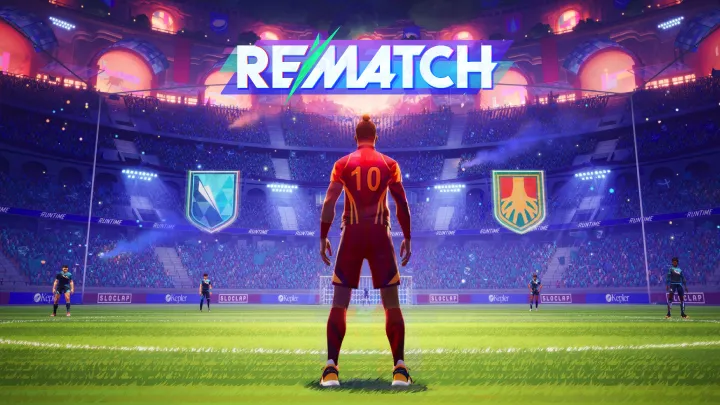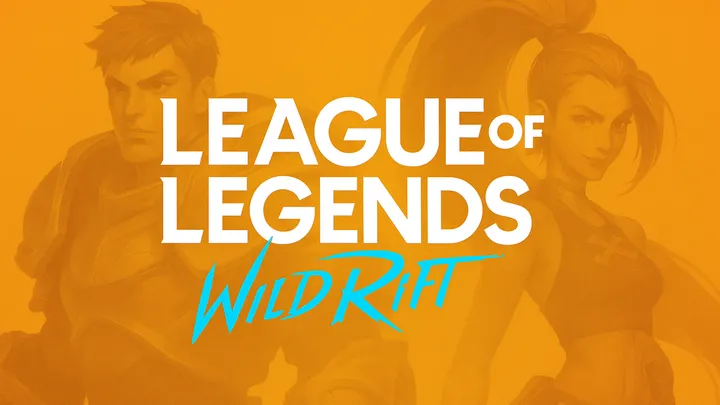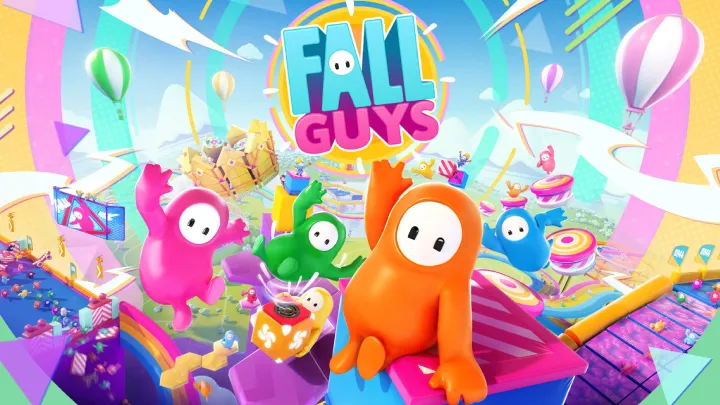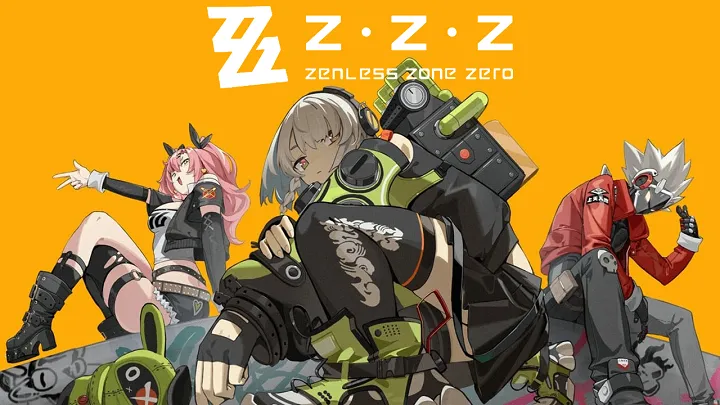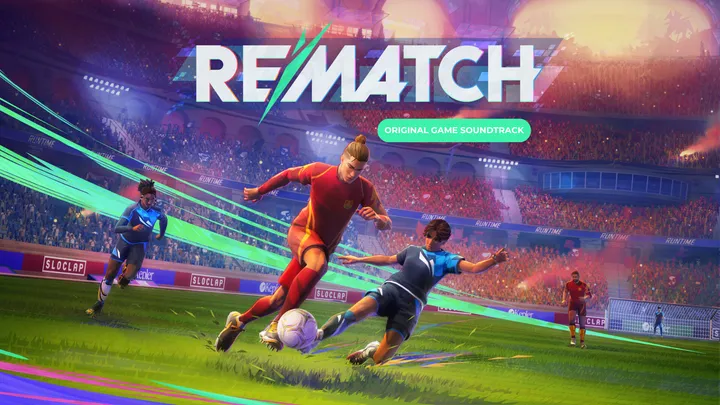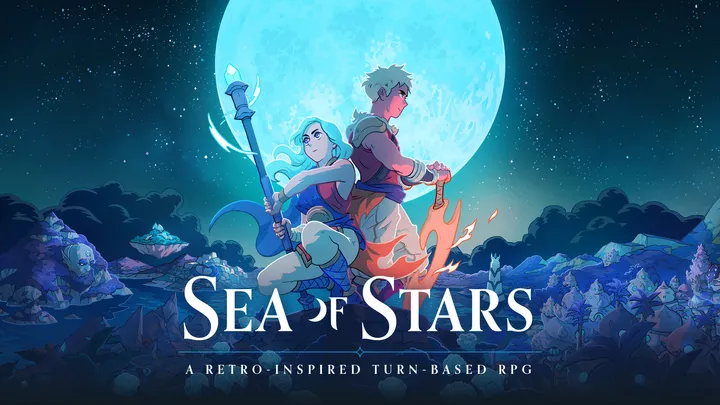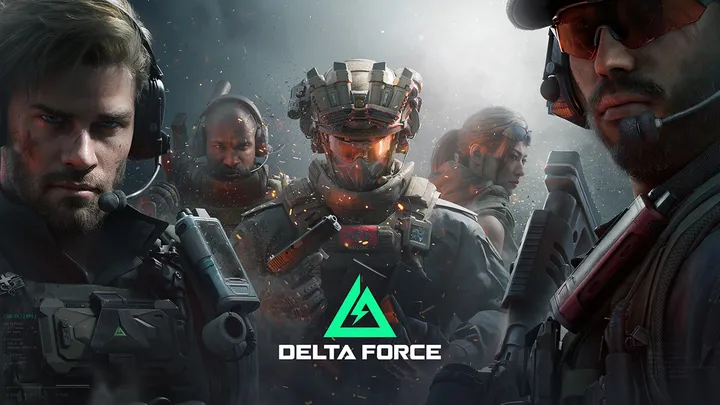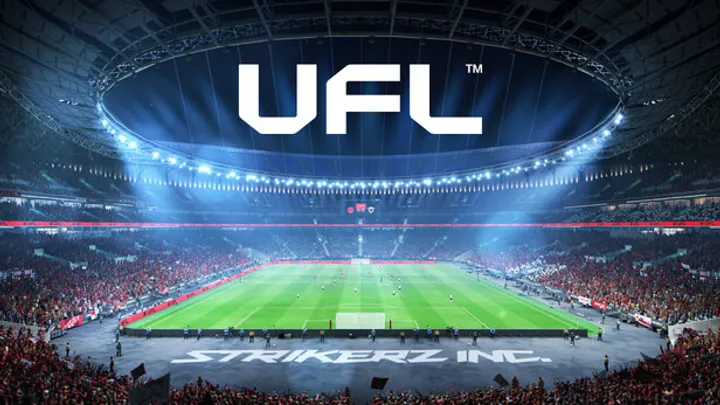1. Introduction & Overview
In the ever-expanding landscape of driving simulators, BeamNG.drive stands apart as a title that dares to push the boundaries of realism, not merely in the way vehicles look or sound, but in how they exist within a virtual environment. Developed by BeamNG GmbH, a relatively small but exceptionally focused German studio, BeamNG.drive first emerged into the public sphere in 2013 through an early access release on Steam. At that time, most driving games fell neatly into one of two categories: traditional arcade racers like Need for Speed or Burnout, and highly technical racing sims such as rFactor, Assetto Corsa, or iRacing. BeamNG.drive, however, sidestepped this binary classification entirely.
Rather than concentrating solely on lap times, perfect racing lines, or competitive multiplayer events, BeamNG.drive introduced something far more fundamental: a meticulously crafted soft-body physics simulation that governs not just how vehicles move, but how they deform, bend, shatter, and crumple under stress — in other words, how they behave like real-world objects made of steel, glass, rubber, and plastic.
From the outset, it was clear that this was not a game designed merely to entertain. BeamNG.drive feels like a sandbox for experimentation — part engineering tool, part entertainment product. The developers themselves have stated that the project’s core mission is to create a physics simulation accurate enough to be useful not only to gamers, but also to automotive engineers, researchers, and anyone needing a safe virtual environment in which to study vehicle dynamics and crash safety.
Early Reception and Growth
In its early days, BeamNG.drive was something of a cult phenomenon. The viral YouTube clips of cars tumbling endlessly down procedurally generated hillsides, disintegrating into hundreds of bent panels and loose parts, were what initially drew attention. But those clips only scratched the surface. The real magic was not in the destruction itself, but in the fact that the destruction wasn’t scripted. Every dent, every shattered windshield, every misaligned axle was the result of a physics calculation — not a canned animation.
Since then, the game has expanded massively. Regular updates have introduced new vehicles, new environments, gameplay scenarios, a gradually evolving career mode, and major overhauls to core systems such as tire physics, drivetrain modeling, and AI traffic behavior. Today, BeamNG.drive sits in a unique position: it is both one of the most technically advanced vehicle simulations ever released to consumers, and an open sandbox where players can drive, crash, explore, or create without strict objectives.
The Balancing Act Between Game and Simulation
What makes BeamNG.drive such an intriguing subject for analysis is its dual identity. On one hand, it’s a serious piece of software whose core technology is robust enough to support professional-grade training and research. On the other, it’s a playground where you can launch a family sedan off a cliff at 200 km/h just to see what happens.
Most racing games attempt to simulate only certain aspects of driving — grip levels, suspension travel, or aerodynamics — but they often ignore, simplify, or entirely omit the kind of real-world consequences that BeamNG.drive embraces. In most other titles, collisions are minor inconveniences, often resolved with a quick reset button and no lasting change to performance. In BeamNG.drive, a single poorly judged corner can bend your steering rod, puncture your radiator, or leave your transmission permanently damaged. The consequences persist until you physically repair the vehicle (or spawn a new one), which makes every driving decision feel weighted and consequential.
This is why the game has found fans not only among traditional gamers, but also among engineers, automotive journalists, and driving instructors who recognize the accuracy and educational potential of its simulation. It is as much about understanding the physics of motion as it is about having fun behind the wheel.
Why This Review Matters
As a driving simulation enthusiast and industry analyst, I approach BeamNG.drive not simply as another game to be “scored” but as a significant technological achievement that sits at the intersection of entertainment and applied science. This review will explore BeamNG.drive in exhaustive detail — examining its physics engine, visual fidelity, gameplay design, modding ecosystem, and real-world applicability — to determine how it stands up as both a game and a professional tool.
By the end, we will see whether BeamNG.drive is merely a niche curiosity for crash test enthusiasts, or whether it truly deserves a place among the most important driving simulations of our time.
2. Physics & Simulation Analysis
If there is one defining pillar of BeamNG.drive, it is without question the physics engine — a system so complex and accurate that it often feels more like scientific software than a consumer entertainment product.
The Core of Soft-Body Physics
Most driving games simulate vehicle bodies as rigid shells with simplified collision meshes. When you crash in such games, the car’s geometry is either pre-programmed to display certain “damaged” states, or the collision merely calculates a force rebound without true deformation. BeamNG.drive breaks from this convention by modeling vehicles as nodes connected by beams in a deformable lattice — hence the name. Each node has its own physical properties such as mass, inertia, and elasticity, while each beam has stiffness, damping, and breaking thresholds.
This means when you hit a wall in BeamNG.drive, the simulation calculates the exact transfer of kinetic energy through the frame, bending or breaking individual beams depending on force and angle. The result is an organic, unscripted deformation pattern unique to every single collision.
Vehicle Dynamics
Beyond crash behavior, BeamNG.drive’s physics engine simulates a vast range of dynamic forces: tire grip and slip angles, suspension compression and rebound, weight transfer, aerodynamics, and even drivetrain losses. Each wheel is modeled individually, with its own suspension geometry, brake force distribution, and contact patch behavior.
Tire physics are particularly noteworthy. Early builds of BeamNG.drive used relatively simple friction models, but over the years, the developers have implemented far more advanced calculations incorporating load sensitivity, temperature effects, and real-time deformation of the tire carcass. This allows for realistic understeer and oversteer behavior, wheelspin under excessive throttle, and accurate off-road traction differences.
Environmental Interaction
Where BeamNG.drive truly shines is in its interaction between vehicles and the environment. Driving on asphalt, dirt, sand, or snow produces distinct handling characteristics, and water is simulated with enough fidelity to cause hydroplaning at high speeds or even stall engines if air intakes are submerged. Off-road rock crawling becomes a slow, deliberate test of suspension articulation, while downhill tarmac racing rewards smooth weight transfer and braking discipline.
Damage Modeling Beyond Aesthetics
Damage in BeamNG.drive is not purely cosmetic. Mechanical failures directly impact performance: a bent driveshaft can cause vibrations, leaking radiators will lead to overheating and eventual engine failure, broken suspension arms will misalign wheels, and flat tires will dramatically change handling. This transforms driving into a more thoughtful process — reckless maneuvers have lasting consequences.
Comparison with Other Sims
When comparing BeamNG.drive’s physics to other high-end sims like Assetto Corsa Competizione or iRacing, the differences become clear. While those titles may offer slightly more refined tire feel in the context of competitive track racing, none of them match BeamNG’s fully deformable soft-body model. It’s the difference between simulating driving a car fast and simulating being a car in the real world.
3. Graphics & Visual Fidelity
BeamNG.drive may have built its reputation on physics, but visuals play a surprisingly important role in reinforcing that realism. A physics simulation, no matter how accurate, loses some of its impact if the on-screen presentation doesn’t convey weight, texture, and motion convincingly. Over the years, the game’s graphics engine has evolved significantly, keeping pace with — and in some areas exceeding — other driving sims.
Lighting and Material Shaders
One of the first things a player notices is how materials react to light. Paint finishes display subtle specular highlights, glass refracts and reflects dynamically, and metal surfaces exhibit a believable sheen that changes with viewing angles. The lighting system, especially after the PBR (Physically Based Rendering) update, gives every scene a more grounded, photographic quality. In bright daylight, chrome accents can dazzle your eyes; at dusk, shadows stretch naturally and headlamps illuminate road surfaces with realistic diffusion.
Damage Visualization
Because damage modeling is such a core feature, the graphics engine has been optimized to show deformation in detail. Crumpled panels have jagged edges, paint scrapes away to reveal primer or bare metal, and shattered glass litters the ground in physically simulated fragments. This visual feedback isn’t just cosmetic — it mirrors the exact state of the car’s physics model at any given moment.
Environments
Maps in BeamNG.drive range from compact testing grounds to sprawling open-world settings. The Utah map, for instance, is a masterpiece of natural terrain — towering sandstone cliffs, dusty switchbacks, and winding canyons that test both driving skill and vehicle endurance. Italy’s map offers Mediterranean coastal roads, narrow village streets, and rolling hills. Each environment is rendered with attention to road surface detail, vegetation density, and ambient sound design.
While some textures may not rival those in cutting-edge AAA titles, the overall presentation is consistent and functional. Importantly, the graphics engine is optimized to maintain performance during intense physics calculations, which is no small feat given the computational load of the simulation.
4. Gameplay & Modes
BeamNG.drive’s gameplay structure is unconventional. It is not a racing game in the traditional sense, nor is it a pure simulator with fixed objectives. Instead, it offers a sandbox framework with various modes layered on top.
Free Roam
This is the heart of the game for many players. You pick a map, spawn a vehicle, and do whatever you want. You can test handling, practice drifting, attempt jumps, explore terrain, or experiment with high-speed crashes. The freedom is intoxicating — there are no penalties for failure beyond the natural consequences of damage.
Scenarios
Scenarios provide structured challenges, such as delivering cargo within a time limit, evading police, or completing precision driving tests. They are often short but highly replayable, with bronze, silver, and gold ratings.
Campaign & Career Mode
Recent updates have introduced a developing career mode that blends missions, economy systems, and progression. You might start with a basic vehicle, earn money through jobs or races, repair damage at a cost, and gradually expand your garage. It’s still in early stages, but the foundation is promising — it adds long-term goals to what was once purely a sandbox.
Time Trials & Races
For players who want competitive elements, time trials allow for lap record chasing, while AI racing pits you against computer-controlled opponents on various circuits or point-to-point courses.
Custom Gameplay Through Mods
Because the community is so active, entire gameplay styles emerge from mods: demolition derbies, off-road endurance events, even roleplaying servers with traffic laws and emergency services.
5. Content Variety
Vehicles
The roster of official vehicles is diverse: compact hatchbacks, muscle cars, pickup trucks, vans, buses, heavy-duty trucks, rally cars, and even industrial machinery. Each is modeled in detail, with unique suspension setups, drivetrain configurations, and weight distributions. The fictional brands — like Gavril, Hirochi, and Ibishu — are crafted with enough personality to feel authentic, avoiding licensing restrictions while still paying homage to real-world inspirations.
Customization
Every vehicle can be tuned extensively: gear ratios, tire types, suspension stiffness, ride height, brake balance, aero kits, and cosmetic paint jobs. Swapping engines, adding turbochargers, or converting drivetrains is straightforward. The depth rivals dedicated tuning simulators.
Maps
From the test-focused Gridmap to realistic cities, mountains, and highways, maps cater to different driving styles. Modders have created hundreds more, including real-world reconstructions like sections of the Nürburgring.
Modding Ecosystem
BeamNG.drive’s modding scene is legendary. The game includes built-in mod management via the official repository, making downloads easy and safe. User-created cars often match — or even exceed — the quality of official content. Community-made maps range from hyper-realistic urban centers to whimsical obstacle courses.
6. Performance & Optimization
Running a fully dynamic soft-body physics simulation on multiple vehicles is computationally expensive. BeamNG.drive is CPU-heavy, often bottlenecking even high-end gaming rigs when simulating large traffic counts or massive collisions.
Hardware Requirements
- CPU: Multi-core performance is critical. A modern 6-core processor is recommended for smooth gameplay.
- GPU: While less important than the CPU, a decent graphics card is needed for high-resolution textures and effects.
- RAM: 16 GB is the sweet spot, especially when using mods.
Scalability
The developers have included numerous performance settings to accommodate different systems. Lowering vehicle detail, reducing shadows, or limiting the number of active cars can dramatically improve frame rates.
Stability
BeamNG.drive is remarkably stable for such a complex simulation. Crashes (the software kind) are rare, and the autosave system prevents significant progress loss.
7. User Experience & Controls
Controls
BeamNG supports keyboard, gamepad, steering wheels, and even full motion rigs. Wheel users will appreciate the detailed force feedback, which conveys suspension compression, surface texture, and weight transfer.
Interface
The UI is functional, if a bit utilitarian. Vehicle spawning, tuning, and map navigation are straightforward, but could benefit from sleeker design elements.
Learning Curve
New players may initially feel overwhelmed. There’s no handholding tutorial for every feature, but the community has filled the gap with countless guides and videos.
8. Community & Modding Ecosystem
The BeamNG community is not just active — it’s creative and collaborative. The official forums are a hub for mod releases, technical discussions, and developer feedback threads. Many updates directly address community requests, and some modders have even been hired by BeamNG GmbH.
Multiplayer
While official multiplayer is not yet implemented, the BeamMP mod enables online sessions with friends. Roleplay servers have blossomed, simulating traffic systems, police chases, and community events.
9. Educational & Professional Use Cases
BeamNG.drive has found use beyond gaming. Universities use it to teach vehicle dynamics, driving schools employ it for hazard perception training, and automotive engineers experiment with crash testing in the virtual environment before real-world prototypes are built.
The accuracy of the soft-body physics means that lessons learned in-game can sometimes translate directly to real driving — particularly in understanding inertia, braking distances, and the consequences of poor vehicle control.
10. Strengths & Weaknesses
Strengths:
- Unparalleled soft-body physics simulation.
- Huge variety of vehicles and environments.
- Endless replayability via mods.
- Strong community engagement.
- Educational potential beyond entertainment.
Weaknesses:
- CPU-intensive performance requirements.
- Still missing official multiplayer.
- Career mode is underdeveloped.
- UI could be more polished.
11. Future Potential & Roadmap
BeamNG GmbH has outlined long-term goals: expanding the career mode, integrating multiplayer, adding more official vehicles and maps, and further refining the physics engine. Given the track record of regular, meaningful updates, the future looks promising.
12. Final Verdict
BeamNG.drive is more than a game — it’s a living, evolving simulation platform. Its physics engine remains unmatched in consumer software, delivering a driving experience that is as educational as it is entertaining. While its unorthodox structure and high hardware demands may limit its mainstream appeal, for enthusiasts, engineers, and creative minds, it offers limitless possibilities.
If you’re looking for competitive racing, there are better options. If you want cinematic storytelling, look elsewhere. But if your goal is to truly understand vehicles — to see them not just as static models but as dynamic machines bound by the laws of physics — BeamNG.drive is in a class of its own.














































